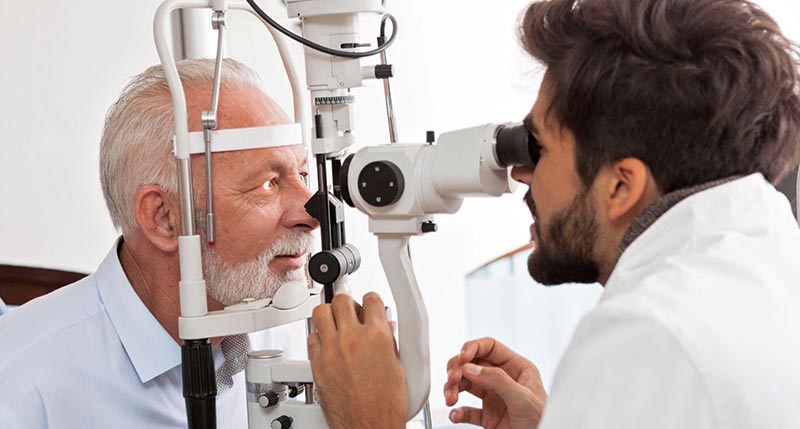Happy 2023! As you start the new year, it’s a common practice to assess what you’re most thankful for and consider goals and resolutions to guide you in the coming 12 months.
If you’re fortunate enough to have healthy eyes and good vision, please take a moment to be grateful for your precious gift of sight. One New Year’s resolution we strongly recommend is to continue to take good care of your eyes to maintain eye health and good vision.
In January, we recognize Glaucoma Awareness Month. Glaucoma is a group of diseases known as the silent thief of sight because they damage the optic nerve without pain or symptoms. Glaucoma is a leading cause of both vision loss and blindness in the United States.
In glaucoma, it is common for fluid to build up within the eye and increase pressure within the eye, which is what causes damage to the optic nerve and loss of vision. Glaucoma has no early symptoms; it isn’t painful; and by the time you realize you’ve lost part of your field of vision to glaucoma, it’s too late to get that vision back — it’s gone forever.
That’s just one reason why we recommend an annual comprehensive eye exam to our patients. During the exam, your optometrist will test for a range of vision problems and concerns, including glaucoma.
Tools Your Eye Doctor Uses to Diagnose Glaucoma
You may be familiar with some of the tools your optometrist uses to test for glaucoma. These tests are painless but incredibly important. Here are six of them:
- Tonometer
Glaucoma is a group of eye diseases that cause damage to the optic nerve. Often, increased intraocular pressure (IOP) within the eye plays a role in that damage. Therefore, testing eye pressure is an important step in diagnosing glaucoma. Tonometry is the process of measuring the pressure inside of your eye. The test is quick, easy and painless. It provides your optometrist with critical information for diagnosis.
- Pachymeter
Another critical factor in a glaucoma diagnosis is central corneal thickness (CCT). Measuring this is another way your optometrist determines whether you may have — or may be at risk for developing — the early stages of glaucoma. Knowing your CCT helps your optometrist correctly interpret your eye pressure levels. A central corneal thickness measurement can be an indicator of whether you’re likely to develop glaucoma. Often, people with thin CCT and high IOP readings have a higher likelihood of developing glaucoma.
- Measuring Visual Field
When glaucoma damages the optic nerve, the first area of vision to suffer damage is typically the side or peripheral vision. Your eye doctor will measure your side vision to determine if any of it has been lost. This measurement is often done with your chin in a stationary position. Then, lights will flash at the edges of your vision, and you press a buzzer when you see a flash of light. A visual field measurement can set a baseline for your peripheral vision and help your doctor track any changes in the future.
- Ophthalmoscope
Examining the optic nerve is a key diagnostic tool in glaucoma, since glaucoma damages that nerve. An ophthalmoscope allows your optometrist to look through your pupil, deep into the structures of the eye, and see the optic nerve. Your eye doctor will examine the nerve’s appearance, which provides a good indication of the nerve’s health when diagnosing or monitoring glaucoma.
- Nerve Imaging
There are multiple ways to take images of your optic nerve, including photography, laser tomography, and laser polarimetry. While the imaging method may vary, the result is a record of your optic nerve that enables your optometrist to analyze the health of your eye and its structures. Optic nerve images help track the progression of glaucoma over time and are used in conjunction with ophthalmoscopy.
- Gonioscope
A gonioscope enables your eye doctor to examine the area where fluid drains out of your eye to determine its health. If your eye’s drainage function is damaged or clogged, knowing that information can help determine the next steps in your treatment. Your optometrist can also see any abnormal blood vessel growth or excessive pigment through a gonioscope, which might impact your eye’s ability to drain and therefore increase the pressure in the eye.
Scheduling your annual comprehensive eye exam is a smart step in protecting your vision. Early detection of glaucoma can help slow or prevent the condition from silently stealing your vision. Call us today to make your appointment!

Recent Comments